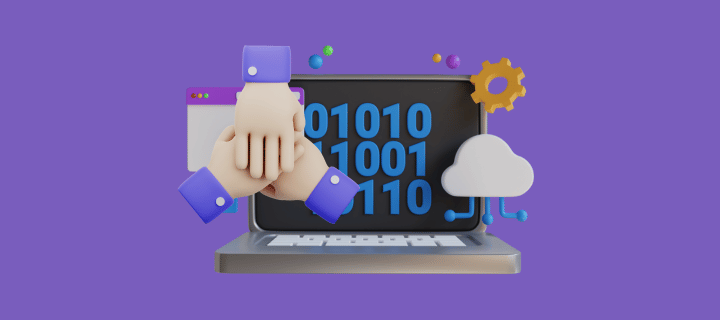
Code Review Therapy: How to Give Feedback Without Breaking Hearts (or Code)
Transform your code review process by understanding developer psychology. Learn proven techniques for giving constructive feedback that strengthens both code quality and team relationships.

“Please fix this mess.”
Three words that can turn a simple code review into a team morale disaster. Sound familiar?
Code reviews aren’t just technical checkpoints—they’re psychological minefields where egos, emotions, and expertise collide. The difference between feedback that builds and feedback that breaks often comes down to understanding the human side of code collaboration.
The Hidden Emotional Cost of Code Reviews
Every line of code represents hours of problem-solving, creative thinking, and mental effort. When developers submit code for review, they’re not just sharing logic—they’re sharing a piece of their professional identity.
Research shows that conflicts during code reviews are common, but teams that handle them constructively see significant improvement in both code quality and team dynamics. The key isn’t avoiding difficult conversations—it’s having them in ways that strengthen rather than strain relationships.
Consider this: when a developer receives harsh criticism, their brain’s threat detection system activates the same way it would during physical danger. This triggers defensive responses that shut down learning and collaboration—the exact opposite of what code reviews should achieve.
The Neuroscience of Constructive Feedback
Effective code review feedback works with human psychology, not against it. Here’s how to frame criticism that actually helps:
Lead with Recognition
Start by acknowledging what works well in the code. This activates the brain’s reward system and creates psychological safety for receiving constructive feedback.
Instead of: “This function is inefficient.”
Try: “Good job implementing the core logic. For optimization, consider using a hash map here to reduce the time complexity from O(n²) to O(n).”
Be Specific and Solution-Oriented
Vague criticism creates anxiety because it leaves developers guessing. Specific feedback with actionable solutions reduces cognitive load and provides clear paths forward.
Instead of: “This code needs improvement.”
Try: “This loop iterates through the entire array each time (line 23). Consider caching the results in a Map to avoid repeated calculations.”
Focus on Code, Not Character
Personal language triggers defensive responses. Keep feedback focused on the code’s behavior, not the developer’s abilities.
Instead of: “You didn’t consider edge cases.”
Try: “This function might throw an error when the input array is empty. Adding a length check would handle that case.”
Building a Culture Where Reviews Improve Relationships
The most successful development teams treat code reviews as collaborative learning sessions, not judgment trials. Here’s how to create that culture:
Establish Psychological Safety
Team members need to feel safe making mistakes and asking questions. Leaders should model this by openly discussing their own learning moments and treating errors as growth opportunities.
Create Review Guidelines That Include Emotional Intelligence
Document not just what to review, but how to review. Include examples of constructive vs. destructive feedback in your team’s review guidelines.
Encourage Curiosity Over Criticism
Train reviewers to ask questions rather than make statements. “What led you to choose this approach?” opens dialogue, while “This approach is wrong” shuts it down.
Celebrate Learning Moments
When someone learns something new through a code review—whether reviewer or author—celebrate it publicly. This reinforces that reviews are about growth, not gatekeeping.
The Reviewer’s Emotional Journey
Understanding the reviewer’s psychology is equally important. Reviewers often struggle with:
- Imposter syndrome: Feeling unqualified to critique others’ work
- Time pressure: Rushing through reviews to meet deadlines
- Perfectionism: Holding others to unrealistic standards
Address these by:
- Rotating review responsibilities to build confidence
- Setting realistic review timeframes
- Distinguishing between “must fix” and “nice to have” feedback
Practical Techniques for Better Feedback
The Sandwich Method (Updated)
The traditional “compliment-criticism-compliment” approach can feel formulaic. Instead, try the Context-Concern-Collaboration method:
- Context: “I see you’re optimizing the search function”
- Concern: “This approach might impact performance with large datasets”
- Collaboration: “What do you think about trying a binary search here?”
Use “We” Language
Frame feedback as a team challenge rather than individual criticism:
- “We should consider how this scales”
- “Let’s think about error handling here”
- “How can we make this more readable?”
Provide Learning Resources
When suggesting improvements, include links to documentation, articles, or examples. This transforms criticism into learning opportunities.
When Reviews Go Right: The Positive Feedback Loop
Teams with healthy review cultures report:
- Faster development cycles due to reduced revision rounds
- Higher code quality through collaborative problem-solving
- Stronger team relationships built on mutual respect
- Increased knowledge sharing across experience levels
The magic happens when developers start looking forward to reviews as learning opportunities rather than dreading them as judgment sessions.
How PullFlow Supports Healthy Review Culture
Creating psychological safety in code reviews requires the right tools and processes. PullFlow helps teams build better review experiences by reducing context switching and enabling more thoughtful feedback.
With PullFlow’s seamless integration across Slack, GitHub, and VS Code, reviewers can provide feedback when they’re in the right mental space—not just when they remember to check GitHub. The platform’s AI assistance helps catch technical issues early, allowing human reviewers to focus on higher-level architectural discussions and knowledge sharing.
Teams using PullFlow report 4X faster review cycles not just because of efficiency gains, but because the improved collaboration experience makes developers more willing to engage in the review process.
Ready to transform your team’s code review culture? Try PullFlow and discover how better tooling can support better human interactions in your development workflow.


